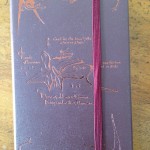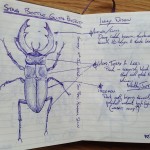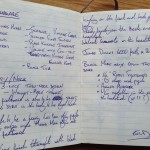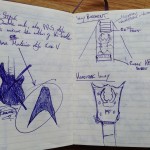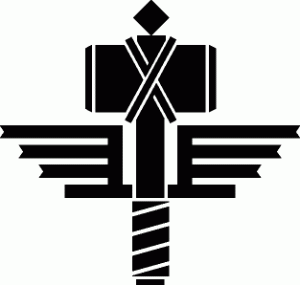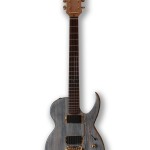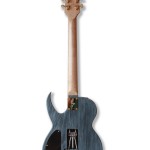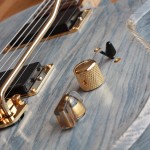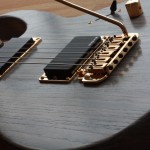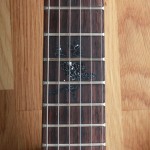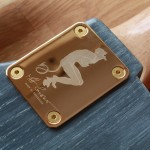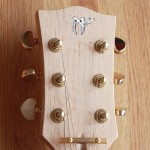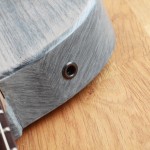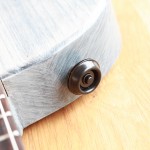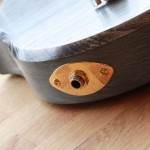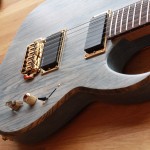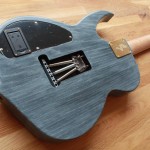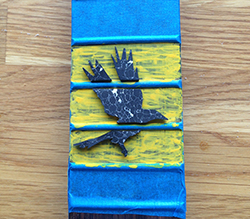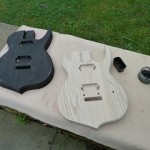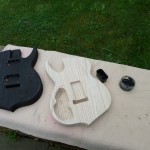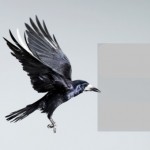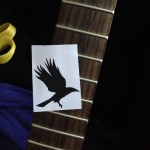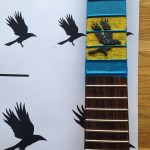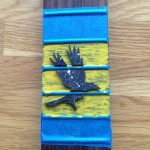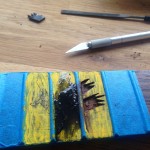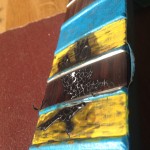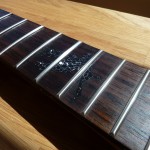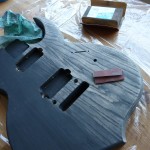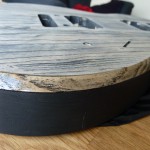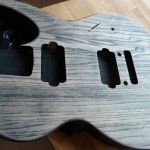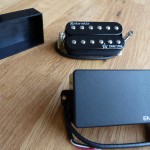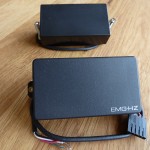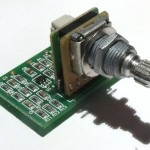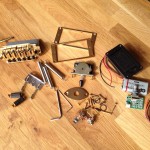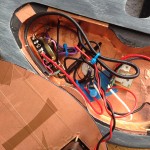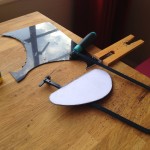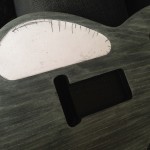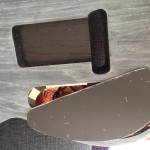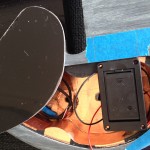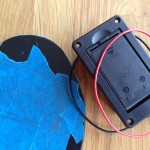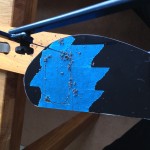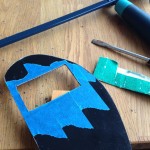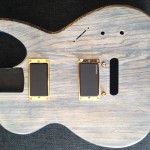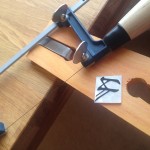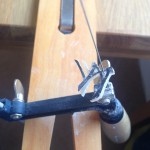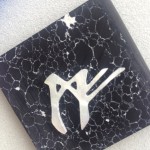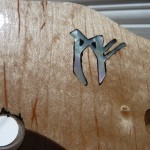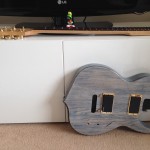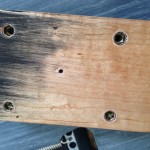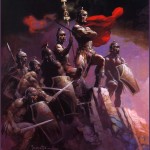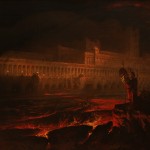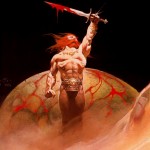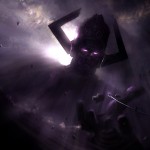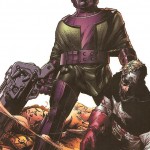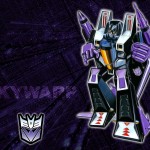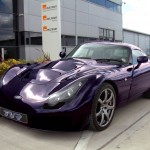Currently in the process of finishing the build to my specifications, Master Luthier Grahame Pollard has created another masterpiece. I will receive the project in its barest form ready to be inlayed, stained, finished, wired and set-up over the coming months.
Lucanus : a genus of stag beetles, Lucanidae.
PREVIEW : Work begins Summer 2015
The idea for this project stemmed randomly from a texted conversation between my brother and me as I was watching the new Robocop film. I wanted to work on a Flying-V style guitar and thought the antlers of the Stag would complement the design well, but the idea itself was very spur-of-the-moment and I don’t actually know where it came from.
I complied my thoughts and designs into the ‘Red Book’, my pocket notepad which occasionally accompanies me to various public houses where ideas are formed during consumption of fine ale. In this case I was sat overlooking the Mediterranean with a glass of wine as I sketched inlay designs.
Raw Project
Spring 2011 – 2014
PERSONAL COLLECTION
Model Name: Raw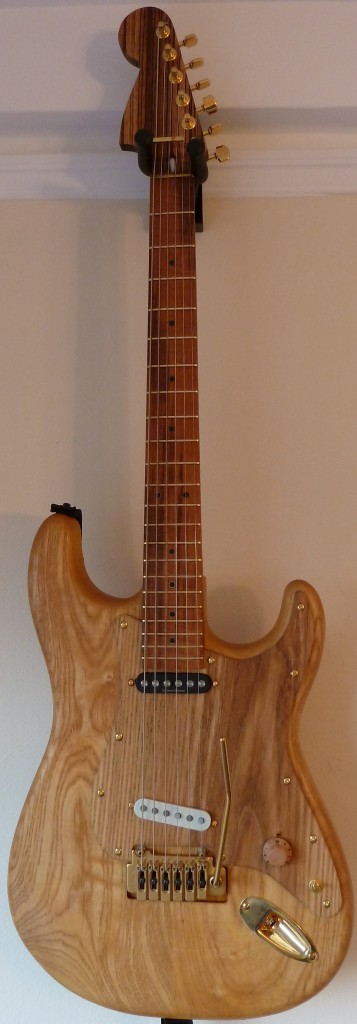
Color: Natural Swamp Ash
Body Material: Swamp Ash
Body Shape: Stratocaster
Body Finish: Tung Oil
Neck Material: Zebrano
Neck Style: CBS Reverse Headstorck
Neck Shape: Wizard “D”
Scale Length: 25” Conversion
Fingerboard: Goncalo Alves
Fingerboard Radius: 14″
Number of Frets: 22
Fret Size: Jumbo Gold ‘Evo’
Nut: Brass
Nut Width: 42 mm
Side Inlays: Black with Gold Surrounds
Neck Plate: Matt Guest custom ‘Daemon’ neck plate
Pickup Configuration: S-S
Bridge Pickup: Seymour Duncan YJM Fury
Neck Pickup: Seymour Duncan Quarter-Pound Flat
Controls: Master volume, 3-way selector switch
Pickup Switching: 3-Position blade:
- Bridge only
- Bridge & neck
- Neck only
Bridge: GOTOH VS100
Hardware Finish: Gold
Tuning Machines: Schaller Da Vinci
Pickguard: Ash
Control Knobs: Ash volume
Switch Tips: N/A
Unique Features:
- Crimson Guitars hand-made neck
- Treble-bleed wiring modification
- Crimson Guitars Customised ‘Bullet’ truss-rod
Following the completion of the ’Duck’ copy, I became slightly envious of my brothers new guitar and wanted a Strat of my own. At the time I only owned my number one guitar, a 1997 Epiphone Les Paul and wanted to have a Stratocaster option for playing SRV licks.
Raw Mk.2
I sourced a blank Strat-style pickguard from the States and used the black Warmoth one to mark out pickup routing and mounting holes etc. I didn’t want to start oiling the pickguard in case it began to warp, so I mounted it to the body before applying Tung oil.
The result looked pretty sweet, and much better than the harsh contrast of black plastic. You could argue that a body routed Strat would have made more sense, but I like the fact that it has the classic configuration of the pickguard, but has the impression of an all-natural finish.
For the neck, I approached Crimson Guitars to build me one to my own specifications which included some exotic timbers: Zebrano and Goncalo Alves. To follow the gold hardware theme I had gold Evo frets installed too. I was aiming for as close to the setup and playability of my number one guitar, but was conscious that it also needed to be different in some way (otherwise there’s no point of having another guitar). So I opted for a ‘D’ shape neck profile. This gives a flat back profile to the neck and makes the feel very different and more ‘Metal’. Ben Crowe at Crimson guitars also calculated a conversion scale for the neck, so that even though it is fitted to a standard Fender Stratocaster body, the resulting scale is actually 25” (like a PRS).
Raw Mk.1
I decided to contact Warmoth in the first instance as they offered great customised options of timber and configuration etc. of bodies and necks, and at the time I had formed limited luthier contacts. In this case I wanted initially to source a signature Fender Yngwie Malmsteen neck and have a fully scalloped neck guitar.
Looking through the Warmoth website showed some beautiful timber varieties, and made me decide to have a natural finish without any paint. This decision was also partly influenced by Stevie Ray Vaughan’s number one guitar which had been worn down to the timber after hours of abuse.
As a homage to Richie Blackmore and Yngwie Malmsteen, I decided on just two single coil pickups (neither artist uses the middle pickup). This meant that I only needed a three-way selector switch and the wiring configuration was more akin to a Telecaster. The black pickguard was originally intended as a little nod to Blackmore’s 70’s Strats too, but the end result never quite looked right against the natural Swamp Ash finish.
I sourced an Yngwie signature neck from eBay and following the wiring and a few coats of Tung oil, my dream guitar was built! The reality of playing a scalloped fretboard was not actually what I had imagined though. I loved the feel of the floating vibrato sensation, but being quite a heavy-handed player I found the treble strings cut into my hands too much. I decided to sell the neck and commission a new one to my own specification (see Mk.2).
Mjölnir (ma.yorll.neer) : the legendary hammer and weapon of the God of Thunder, Thor. Forged by the Dwarven brothers Eitri and Brokkr as a result of an ill-fated wager with Loki.
“…Thor might smite as hard as he desired, whatsoever might be before him, and the hammer would not fail…”
I have recently been able to free up some resources which will allow me to begin work on a third concurrent project. Following the Nordic themes of my guitar projects, this next Les Paul style guitar will be in tribute to Mjölnir, hammer of Thor, the God of Thunder.
I will be taking advantage of some extremely attractive figured grain in the timbers used for this project, and so the finish will be very natural and wholly unadorned.
The fretboard will feature a solitary inlay spanning the 11th, 12th and 13th frets; the Sign of the Hammer, an added homage to one of my all-time favourite true-Metal bands, Manowar.
This will be crafted from engraved, white Mother of Pearl. The electronic configuration will be very minimal, highlighting the quality of materials used;
- bridge & neck humbucker
- single volume pot
Currently the intention is for a set of Bareknuckle ‘Miracle Man’ humbuckers, probably with just a coil-split option within the volume control.
Raven Projects : Huginn (2 of 2)
Spring 2012 – July 2014
SOLD
Model Name: Huginn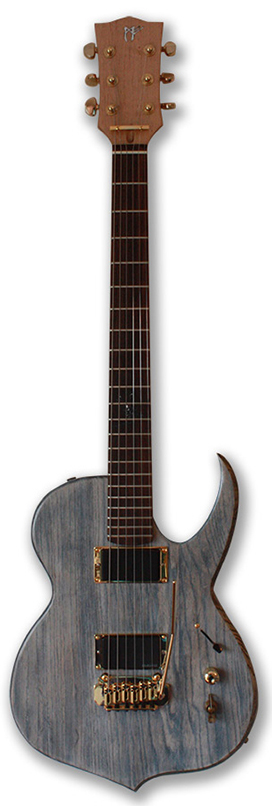
Color: Ashen-grey
Body Material: Swamp Ash
Body Shape: MG/CR Raven
Body Finish: Wudtone ‘Olympic Girl’ and Black dye
Neck Material: Rock Maple
Neck Style: 3×3 Headstock, satin Wudtone finish
Neck Shape: Modern “C”
Scale Length: 25.5”
Fingerboard: Rosewood
Fingerboard Radius: 12″
Number of Frets: 22
Fret Size: Jumbo
Nut: White composite
Nut Width: 42 mm
Side Inlays: White dot
Neck Plate: Matt Guest custom ‘Daemon’ neck plate
Pickup Configuration: HB-HB
Bridge Pickup: EMG HZ4
Middle Pickup: N/A
Neck Pickup: Entwistle Dark Star
Controls: Master volume, Artec QDD2 onboard effects selector switch (9V battery included)
Pickup Artec Onboard Effects Switching: 5-Position rotary:
- True Bypass (off)
- Clean Boost
- Blues Overdrive
- Rock Distortion
- Heavy Metal Overdrive
Pickup Switching: 3-Position blade:
- Bridge only
- Bridge & neck
- Neck only
Bridge: 6-Saddle, twin-pivot modern style floating tremolo
Hardware Finish: Gold
Tuning Machines: Grover
Pickguard: N/A
Control Knobs: Gold brass knurled volume, Gold vintage style ‘chicken-head’
Switch Tips: Black
Unique Features:
- Custom abalone headstock inlay
- Reconstituted marble Raven fretboard inlay at 11, 12 & 13th frets
- Machine-thread neck insert for neck-mounting
- Dunlop low-profile locking strap buttons
- Treble-bleed wiring modification
Originally planned as a single, unique design and build, I managed to get a good deal purchasing the timber from Phil at Guitarbuild.co.uk and ended up with two Swamp Ash body blanks. With two potential builds, I decided to theme along the lines of Norse mythology primarily as I wanted to create a transparent black, natural finish that would enhance the figuring of the Swamp Ash grain, but also because it seemed cool. The inspiration for this colour effect was a Raven’s wing, so I decided to theme the builds as Odin’s Ravens, Muninn (memory) and Huginn (thought). The body design was the result of many long hours in consultation with Chloe, aiming for a contemporary mix of Les Paul and Super-Strat body styles whilst keeping our own unique twist. The right horn was finished with a bevelled edge for a sword-edge-like emphasis and was cut deep to allow easy access to the high fret area. This guitar was designed to look and feel sharp and edgy, and so I felt it needed a very fast action.
There is no scalloping on Huginn (unlike Muninn), alternatively a rosewood fretboard has been used which features the Raven design inlay across the 12th fret in reconstituted black marble.
An EMG high-output passive pickup has been used in the bridge position giving an appropriate darkness to the sound, while an Entwistle custom wound Darkstar humbucker is used in the bridge position. Huginn features onboard effects via an Artec QDD active electronic modulator. This 5-way selector switch allows Clean Boost, Blues Overdrive, Rock Distortion and Heavy Metal profiles and also features a true-bypass ‘passive’ mode to allow a nice clean tone.
– Odin, translated from Old Norse
Follow the design and build diary of Huginn…
Using a reconstituted rock material to give a black marble effect, I found a profile image of a Raven in flight to use as a fretboard inlay centred on the 12th octave fret.
Chloe manipulated the image to create the silhouette effect I wanted and simplified it slightly so that it would make the cutting easier with the jewellers saw. ‘Reconstituted rock’ is basically just compacted dust, so it can be very delicate when cut thinly and has a tendency to delaminate. We printed out a few different sizes before choosing the one that fit the best, and then cut out strips from across the image to marry up with the existing frets. Ideally all inlay work should be attempted before the frets are installed, as it makes all the work so much easier.
The yellow poster paint allows a heavy contrast against the rosewood when scoring around the substrate to inlay, making the routing process much more clearly defined. The water-based paint is then easily sanded off of the woodwork, without leaving any trace.
As with all my builds now, included on the headstock is my rhunic monogram design, this time in figured mother-of-pearl.
Inlays now complete and ready to start applying the satin finish to the neck.
This took a quite a bit of thought and much rearranging of the list from number 5 onwards, as it is difficult to pinpoint influences retrospectively. As a guitar enthusiast primarily and not a musician, I think it is an important exercise to convey where my ideas for guitar projects originate musically. Not only the look and style of a guitar, but more importantly the sound and tone I am trying to create in my instruments.
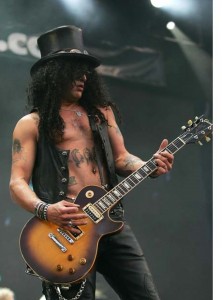 1 : Slash
1 : Slash
Saul ‘Slash’ Hudson is quite simply the reason I persevered with the guitar as an instrument.
There was a staggered delay on the rock bands my brother and I enjoyed when we were young. Lee first started listening to Bon Jovi albums while I was still listening to Rainbow and Iron Maiden, and when he moved on to Guns N’ Roses, I started enjoying Bon Jovi, and so on (this trend actually carries on to this day, most recently with the guitarist Joe Stump). It took me a long time to get into Guns N’ Roses, simply because Lee had played Sweet Child o’ Mine and Paradise City so obsessively that I had begun to develop a tick at the very sound of them.
It was at the release of the Use Your Illusion albums that I began to enjoy the more melodic and structured songs that appeared on these two albums, and eventually I would start listening to the Appetite album religiously.
Slash has developed what seems to be a signature ‘tone’ over time that he is most renowned for, and this is cited on many reviews of albums and even kit such as signature guitars, amps and effects. Notably a creamy warm sustain achieved by the neck pickup selection through a Marshall stack, and even sometimes through a Dunlop Cry Baby with the treble rolled back. Incidentally this is not the sound I associate with Slash’s best work. I prefer the harsher bridge tone heard on the Appetite album, especially on the track Night Train. This aggressive bite almost leans over into the single coil territory until the power chords and double stops make it more obvious that’s it’s a very hot-wound humbucker.
The low slung guitar, top hat and leather jacket is the iconic image that made me want to play lead guitar as a teenager and began my obsession with the carved top solid body Les Paul guitar.
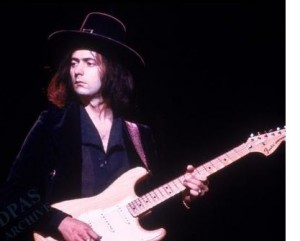 2 : Ritchie Blackmore
2 : Ritchie Blackmore
I never got the whole Deep Purple thing, I just don’t find the progressive rock sound very appealing, but as my Dad didn’t have any Deep Purple albums, I never really listened to them growing up either. What I can remember from as early as memory allows is listening to my Dad’s ‘Best of Rainbow’ double LP. Blackmore’s guitar style was so distinctive and profound even at four years old, it seemed like a totally different instrument than a boring old guitar. It was always the Dio tracks on the compilation album that were my favourites because of the fantasy oriented lyrics and his awesome voice. This coupled with the neo-classical nature of the guitar leads made Rainbow one of my all-time favourite bands to this day. Stargazer remains one of my favourite songs equally for the guitar passages and the lyrics. Later as I began to play guitar, I tried a few times to play Blackmore pieces after finding Tab for different tracks, but I always found it very difficult to play and almost counter intuitive compared to pieces I had leaned after picking up the instrument (Metallica, Guns N’ Roses etc). It’s a very singular style and cannot be compared to other artists in my opinion.
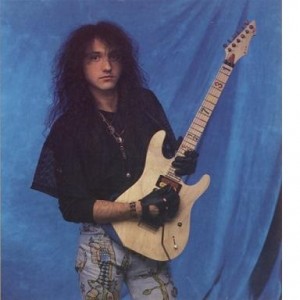 3 : Jason Becker
3 : Jason Becker
The Cacophony album with Marty Friedman is a work of art in terms of shred guitar. Pre-YouTube days, it was difficult to distinguish the two guitarists on the CD, but I realised over time listening to Friedman’s work with Megadeth that it was Becker’s tracks that were my favourites. A very short musical career, sadly due to ALS disease meant there is a very limited catalogue of Becker’s material to listen to, but the effortless intricate shredding technique still sounds unique and recognisable in a genre flooded with virtuosos.
I’ve never been a fan of whammy bars, apart from when I had never played one, which made it the only thing I wanted in a guitar; but Becker’s use of tremolo bar adds another facet to the instrument that is very daunting for a learning guitarist. It’s the ability to play soulful passages within runs of hyper-speed arpeggios makes his work very special for me. ‘Throat Hole’ from the Raspberry Jams album is one of the most soulful pieces of solo guitar I have ever heard.
I’m glad to hear Seymour Duncan have recently released a signature pickup authorised by Jason which sounds awesome; I’ll definitely be using these on a build at some point in the future.
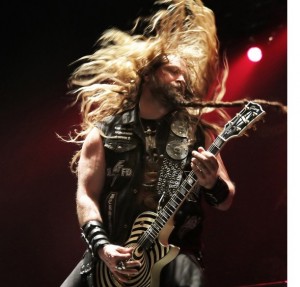 4 : Zakk Wylde
4 : Zakk Wylde
My brother and I would often talk about our favourite guitarists’ instruments and surmise that it must be the deep cut-outs allowing high-fret access and thinner neck profiles of the Ibanez/Charvel type guitars that allowed guitarists to play so fast, and the reason why there weren’t any true shredders using Les Pauls.
Zakk Wylde changed all of that.
The first time I heard of Zakk Wylde was when Lee showed me the liner note of Ozzy Osbourne’s ‘No More Tears’ album, which showed Zakk stood brooding with a bowler hat on, which I remember thinking at the time meant that he would be the next Slash. I didn’t see him actually play the guitar for a few years until an episode of Raw Power (which turned into Noisy Muthers), a late night heavy metal TV program, where he was playing with his new solo project Pride and Glory. Probably the most animated full-on shred guitarist I’ve ever seen, I still don’t know how he plays so fast with his Les Paul slung so low. His technique of favouring the picking of every note opposed to legato has been a big influence on my own playing, and I find I judge other guitarists on this ability also.
I loved the Bullseye Les Paul that identifies him instantly along with the sheer speed of pentatonic licks and wide vibrato, not to mention the frequent pinched harmonics throughout. I remember sat with my crappy Encore Strat copy guitar and a copy of Total Guitar magazine one Saturday in my mid-teens, reading a description of how to perform a pinched harmonic.
There aren’t many mass produced guitars I would like to own any more, but a Zakk Wylde signature Les Paul is still on my wish list. I’m not personally a fan of active electronics like the EMG’s Zakk uses, but I am a massive fan of the raw maple neck, cream/bullseye finish and full block inlays used on his signature model.
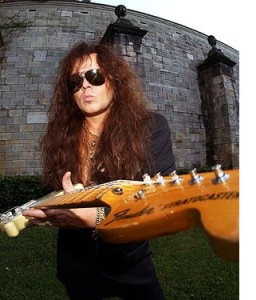 5 : Yngwie J. Malmsteen
5 : Yngwie J. Malmsteen
It took me a long time to get into Yngwie, but then there is no going back. Another cast-off from my brother, we found the ‘Live in Leningrad’ album in the Rotherham library which featured a rental service of books, VHS and CDs. This is how we acquired the majority of heavy metal albums at the time, but Yngwie was totally different to anything else we had heard. I had not heard really anything that fast before and it was difficult to appreciate what was going on with the heavy classical influence woven through it all. Later learning to love all of Yngwie’s work, it was his guitar itself that fascinated me for years. Yngwie uses a scalloped fretboard on the majority of his Stratocasters, an idea based on the design of a 16th century Lute. The signature Malmsteen Stratocasters we way out of the realms of financial possibilities, so I decided to build Lee one (The Duck) on the cheap so that I could also get to play a scalloped neck too. This build was the first real guitar project for me and led on to me wanting to create my own designs.
The scalloped neck does feels nice and allows a lot more grip when bending strings, which lent itself surprisingly well to the Blues. I had a scalloped neck on my own No.2 guitar for a few years, but I’ve recently changed for a traditional flat board and jumbo frets, as it’s too easy to bend sharp when fretting heavily.
Sadly I doubt I’ll ever be able to play 90% of Yngwie’s music, I still enjoy listening to his earlier work frequently.
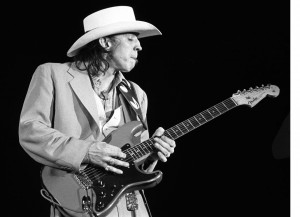 6 : Stevie Ray Vaughan
6 : Stevie Ray Vaughan
I listened to a lot of SRV in my first year of University, and is basically how I got to love Blues music in general. I first heard The Sky is Cryin’ on Paul Jones’ Radio 2 Blues program one night as I was playing on the X-box. The first thing that struck me was the tone of the guitar was so thick, it was hard to believe he was playing a Strat. I liked how his work sometimes almost bridged the divide between Rock/Metal and traditional Blues. I treated myself to a SRV back catalogue Tablature book and slowly began to learn different riffs, licks and solos from his albums. ‘Mary had a little Lamb’ from the ‘Texas Flood’ album was the first song I learned to play all the way through.
Reading about SRV’s setup influenced my own preferences of heavier gauged strings, jumbo frets and an action on the higher side.
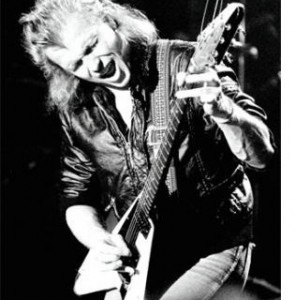 7 : Michael Schenker
7 : Michael Schenker
Another guitarist who is instantly recognisable; black and white flying V, platinum blonde hair and half-crouching stance, Schenker has written some of the best guitar riffs in classic rock history.
I love the ‘bite’ to Michael’s tone that gives his soloing a harsh edge. I have learned fairly recently that this is achieved by passing his guitar signal through a Cry Baby Wah that is fixed majorly into the treble section. His black and white Flying V guitar is such an iconic instrument and brilliant design, I intend to use this as an inspiration for my own V guitar build in the future.
It can be quite difficult to play Michael’s music the way he plays it himself. During an ascending scale, where most guitarists would instinctively skip over to the higher strings, Schenker often travels up the neck and remains on the same string. This can be tricky to grasp at first, but there are some definite tonal advantages of staying on the bass ‘wound’ strings for the higher frets in solos.
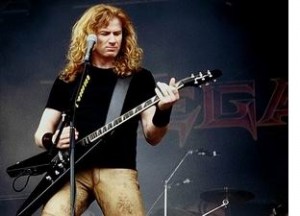 8 : Dave Mustaine
8 : Dave Mustaine
I think Dave Mustaine is highly underrated as a guitarist in his own right. He has written some searing solos throughout Megadeth’s career along with many of the best Heavy Metal riffs ever heard. Giving his own stamp on the Flying V type guitar, he prefers very pointy pure Metal instruments and incorporates many complex rhythms that are similar to James Hetfield in Metallica, and yet recognisably individual and unique.
Hanger 18 from the ‘Rust in Peace’ album remains one of the best Thrash Metal tracks of all time, and features something like eleven separate solos shared between Mustaine and Marty Friedman.
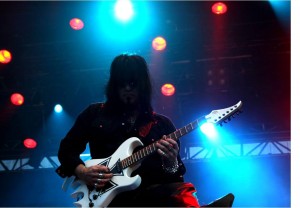 9 : Joe Stump
9 : Joe Stump
Initially I ignorantly wrote Joe Stump off as ‘just another Yngwie copy’ when Lee first brought him to my attention around ten years ago. There is no doubt that his style is very heavily influenced by Malmsteen, but he surprisingly has a much more noticable Blackmore influence to his playing than Yngwie ever has.
I personally believe he is currently creating the greatest heavy rock/metal solo guitar work from all I have heard, and has a greater depth of musical scope when compared to Malmsteen’s recent work.
Joe uses scalloped fretboards and a variety of Yngwie signature models, his own ESP signature models and custom MC Guitars models.
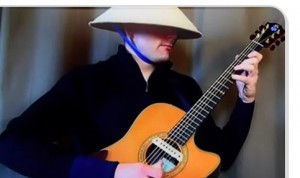 10 : Ewan Dobson
10 : Ewan Dobson
My girlfriend Chloe and I went to see a guitarist called Ewan Dobson just before Christmas 2013, and was simply blown away by his performance. Using a fingerpicking style and exclusively acoustic guitars onstage, Ewan progressed through a series of instrumentals incorporating advanced and ridiculously intricate techniques and rhythms. He is literally the greatest guitarist I have ever had the privilege to watch perform in person and I look forward to all his future releases.
Ewan references computer game themes in many of his pieces, and many of the themes of his playing resemble old SID chip compositions that used to appear in Commodore 64 games in the 80’s. Partly influenced by his performance in December, I plan to theme a guitar project in the future on my beloved Commodore 64, including sprite inlays along the fretboard and active electronics with arcade buttons etc. on the guitar body.
The problem with Top 10’s are that they limit the choices to just… well ten obviously, but there are many other guitarists that have influenced me in lesser ways over the years for style, tone and attitude that also deserve recognition, including: Dimebag Darrell, Tony Iommi, Paul Gilbert, Randy Rhodes, Walter Trout, Steve Vai, Muddy Waters, Chris Holmes, John 5, Rory Gallagher, George Lynch, Billy Gibbon, Jimmy Hendrix, Katsu Ohta, Eric Sardinas, Timmo Tolki, James Hetfield, Kerry King, Dave Murray, Nuno Bettencort, Tom Kiefer, Kirk Hammett, Keith Richards, Gary Rossington, Billy Duffy, Rudolph Schenker, Ted Nugent, Patrick Rondat, Willie Nelson, Dick Dale, Bruce Kulick, Uli John Roth, Martin Simpson, Manitas De Plata, Brian May, John Frusciante etc. etc. etc.
Artec QDD – On-board Overdrive/Distortion Effects
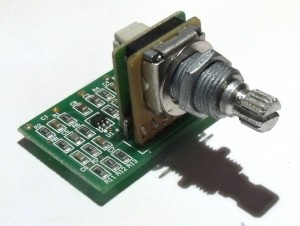 Huginn’s control configuration will differ slightly from it’s twin Muninn, as it will feature on-board effects provided by Artec’s QDD2 device.
Huginn’s control configuration will differ slightly from it’s twin Muninn, as it will feature on-board effects provided by Artec’s QDD2 device.
This offers five separate settings:
- 1 : True bypass (off)
- 2 : Clean boost
- 3 : Blues Overdrive
- 4 : Rock distortion
- 5 : Heavy Metal
A great degree of versatility is added by this effects circuit, offering tone and overdrive/distortion options embedded within the guitar; eliminating the need of an external distortion pedal.
Powered by a single 9V battery housed within the control cavity will give over 3000 hours of use. An additional control position will be drilled for the QDD2 rotary selector accompanying the push-pull master volume control and coil-splitting functionality.
Doom
I remember when Grunges bastard child ‘Nu-metal’ came on the scene in the mid-90’s; the guitar riff’s suddenly sounded much heavier and darker somehow. I was actually more interested in the Hip-hop integration with Metal at the time musically, and it took me a while to get into the new guitar sound. I just assumed it was some production effect on the guitars that gave the heavy tone and it wasn’t until I was reading one of my Brother Lee’s Powerplay magazines that I noticed the guitarists in Korn had 7-stringed instruments. I knew Steve Vai played a 7-stringer, but I’d never associated the instrument with heavy riffage, which made it more appealing to me as I thought it was very reminiscent of Cliff Burton’s sound during his bass solos.
It is around this time I started playing guitar again (after a very brief ‘strumming’ period aged around 9 years old). I would write to guitar manufacturers like Ibanez, Jackson, Gibson etc. to request their catalogues so that I could see the latest guitar ranges and specifications. We didn’t have a home PC at the time, so I would have to sneak onto the guitar websites in between (and during) lessons at college. It was very difficult to find information about latest guitars and Rotherham didn’t have a very comprehensive guitar shop, so this was the only way I could stay up to date. The Ibanez catalogue had good images and specifications of the signature models for Munky and Head of Korn, which both had 7 strings and featured locking tremolos.
I wanted one desperately even though I didn’t know what to do with just 6 strings at the time and I couldn’t afford or justify a 7-string guitar.
Ragnarok will finally fulfil my adolescent dreams of a owning and playing a carved top Les Paul style 7-stringer; it will be very difficult to part with it at the end.
Deep Purple
I have toyed with the idea of an all-black finish for this guitar, but being inspired by artists like John Martin, Frank Frazetta and John Howe, I would like to try and attain an Armageddon storm cloud type of finish for the body. Primarily dark purple, I want to incorporate some hints of white and blood-red as an underlying highlight. Currently the idea is to have a tight-grained Wenge body with a book matched flame-Maple cap. I intend to grain fill certain areas of the flamed figuring with red-dyed grain filler, emulating fissures in a volcano. This will contrast quite strongly with the white-grain filler towards the centre of the body (see the concept post for Ragnarok), so I need to plan carefully to ensure some degree of subtlty here. The red flamed grain will flare out towards the outer rims of the body, and will be mostly tempered underneath the black finish surroundings of the ‘sunburst’.
A deep purple trans-finish will then cover everything and hopefully give the intended ‘brewing storm’ effect. There are a few different aspects where I will draw inspiration from for the dark purple finish and red highlights; some are pretty tenuous but this is what my mind sees (see below):
- ‘Seven Romans’, Frank Frazetta
- ‘Le Pandemonium’, John Martin
- Bloodstone, Frank Frazetta
- Galactus, the Devourer of Worlds
- Kang the Conquerer
- Skywarp, Decepticon
- TVR Sagaris

